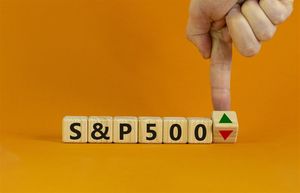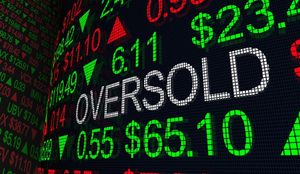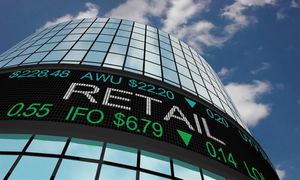
As the calendar turns to late November 2025, the United States economy finds itself at a critical juncture, marked by persistent signs of stalling inflation and increasingly weak consumer spending. This confluence of economic headwinds is not only reshaping the immediate outlook for financial markets but is also signaling a clear and imminent shift in the Federal Reserve's monetary policy. The implications for precious metals, particularly gold and silver, are profoundly bullish, as investors seek safe havens amidst a landscape ripe for further monetary easing.
The current economic environment is creating a powerful tailwind for gold and silver prices. With inflation showing signs of moderating and consumer spending losing momentum, the traditional appeal of these non-yielding assets intensifies. Lower interest rates, a weaker U.S. dollar, and heightened economic uncertainty—all direct consequences of the current data and anticipated Fed actions—are converging to make gold and silver exceptionally attractive, positioning them as key beneficiaries in a market bracing for significant policy adjustments.
Economic Headwinds and the Fed's Dilemma
The current economic narrative is largely shaped by recent data releases indicating a persistent battle against inflation and a noticeable cooling in consumer expenditure. While the Federal Reserve aims for a 2% average annual inflation rate, the Consumer Price Index (CPI) for September 2025 rose to 3% annually, slightly up from 2.9% in August. Core inflation, which strips out volatile food and energy prices, showed a minor deceleration to 3% from 3.1%. The Personal Consumption Expenditures (PCE) price index, the Fed's preferred inflation gauge, also remains a key focus. Although the September 2025 PCE data was released on September 26, nowcasts for November 2025 suggest monthly CPI around 0.32% and Core CPI around 0.25%, with PCE around 0.27% and Core PCE around 0.23%, indicating inflation is still above the Fed's target but showing signs of moderating.
Concurrent with these inflation figures, signs of weakening consumer spending are becoming increasingly apparent. While aggregate consumer spending has demonstrated resilience, particularly among higher-income demographics, broader trends suggest a slowdown. The University of Michigan Consumer Sentiment Index has reportedly plummeted to a 2.5-year low in November 2025, with expectations for personal financial and business conditions reaching record lows. Several retailers have begun to issue revised, lower earnings guidance, attributing these adjustments to a discernible slowdown in consumer purchasing activity. This weakening spending is a critical indicator, as Personal Consumption Expenditures (PCE) typically account for approximately two-thirds of the total U.S. economic activity.
The Federal Reserve, as the primary guardian of the U.S. economy's stability, finds itself at a crossroads. Its dual mandate of achieving maximum employment and price stability (a 2% inflation target) is being tested by the current data. If inflation remains "sticky" above the 2% target while economic growth slows and the labor market weakens, the Fed faces a dilemma. However, recent statements from key figures within the central bank suggest a leaning towards easing. On November 17, 2025, Federal Reserve Governor Christopher Waller publicly stated that the labor market is "weak and near stall speed" and underlying inflation is "relatively close" to the target, explicitly endorsing a 25-basis-point interest rate cut at the upcoming December FOMC meeting. New York Fed President John Williams echoed this sentiment, pointing to room for further rate reductions due to a softening labor market.
Investors, keenly attuned to these economic signals and the Fed's evolving stance, have reacted decisively. The perception of an impending dovish pivot by the Federal Reserve has significantly bolstered demand for safe-haven assets. Gold (XAU) and silver (XAG), long considered hedges against economic uncertainty and inflation, have seen substantial inflows. As of November 25, 2025, gold prices have surged dramatically, posting a 50% gain year-to-date, driven by global economic and geopolitical uncertainties and central bank purchases. Spot gold prices jumped 1.2% to $4,111.86 per ounce on this date. Silver has mirrored this robust performance, with spot silver gaining 1.7% to $50.84 per ounce, even touching $51.57 earlier in the day, marking a staggering 69.59% year-over-year increase and a 10.15% rise over the past month. This strong rally underscores the market's conviction that lower real yields, influenced by anticipated rate cuts, provide a compelling incentive for investment in precious metals.
Corporate Winners and Losers in a Shifting Economy
The current economic climate, characterized by stalling inflation, weak consumer spending, and the anticipated dovish pivot by the Federal Reserve, is creating a distinct bifurcation in the performance of public companies. Businesses are either poised to capitalize on these shifts or face significant headwinds, depending on their sector, business model, and exposure to consumer discretionary spending and interest rate sensitivities.
Companies that are likely to thrive in this environment are generally those that offer value, cater to essential needs, or are highly sensitive to lower borrowing costs. Discount retailers, for instance, are expected to see increased traffic as consumers become more price-sensitive. Companies like TJX Companies (NYSE: TJX), parent to TJ Maxx and Marshalls, have already demonstrated robust growth, benefiting from their off-price model. Similarly, grocery stores and consumer staples companies, such as The Coca-Cola Company (NYSE: KO), The Hershey Company (NYSE: HSY), and Procter & Gamble (NYSE: PG), are proving resilient. As consumers cut back on dining out, the shift towards at-home consumption bolsters these sectors, even allowing for some pricing power due to brand loyalty. Utilities, often seen as bond proxies, could also gain favor as interest rates decline, making their stable dividends more attractive and reducing their substantial financing costs.
The prospect of Federal Reserve easing, leading to lower interest rates, is particularly beneficial for growth-oriented sectors and companies with significant debt. Technology and small-cap stocks, which often rely on external funding for innovation and expansion, stand to gain from cheaper borrowing. The home construction and broader real estate sectors are also poised for a rebound. Lower mortgage rates stimulate demand for new homes, benefiting homebuilders like Builders FirstSource (NYSE: BLDR) and related industries such as flooring supplier Mohawk Industries (MHK). Capital-intensive industrial projects are also expected to pick up, benefiting companies like Caterpillar (NYSE: CAT). Even select financial institutions, particularly regional banks, could see increased loan demand, while investment banks like Goldman Sachs (NYSE: GS) might experience higher fees from stimulated capital markets activity.
Conversely, companies heavily reliant on discretionary consumer spending are facing significant challenges. The consumer discretionary sector, encompassing apparel, electronics, home furnishings, and restaurants, is highly vulnerable to reduced spending. Automakers such as Tesla (NASDAQ: TSLA), General Motors (NYSE: GM), and Ford Motor Company (NYSE: F) are already grappling with demand and affordability issues, exacerbated by the spending slowdown. Luxury goods brands, including LVMH (EPA: MC), Richemont (SWX: CFR), Hermès (EPA: RMS), and Tiffany & Co. (NYSE: TIF), have reported weakening demand as consumers tighten their belts. Fast-food giants like McDonald's (NYSE: MCD) and Starbucks (NASDAQ: SBUX), along with food delivery services like DoorDash (NASDAQ: DASH), are experiencing slowing sales as consumers opt for more budget-friendly alternatives. General merchandise retailers like Target (NYSE: TGT) and Walmart (NYSE: WMT) are also feeling the pinch, with Target anticipating a holiday slump and planning price cuts to stimulate demand, while Walmart reports weakening consumer demand affecting overall sales, especially in higher-margin categories. Financial institutions that are overly reliant on high-interest income might also see their net interest margins compressed as rates decline.
Broader Implications and Historical Parallels
The current economic landscape in the United States, marked by persistent inflation, weakening consumer spending, and the Federal Reserve's cautious approach to monetary easing, carries profound wider significance, extending beyond immediate market reactions to reshape broader industry trends, global trade dynamics, and regulatory frameworks. A critical factor in this complex scenario is a new wave of protectionist trade policies enacted in April 2025, which have significantly altered the economic calculus.
While the initial premise suggested "stalling inflation," current analyses indicate that U.S. inflation remains elevated, with its downward trajectory temporarily stalled. As of late 2025, the Federal Reserve’s preferred measure, the Personal Consumption Expenditures (PCE) price index, hovers around 2.7% to 2.9%, stubbornly above the Fed's 2% target. This persistence is largely attributed to the comprehensive package of new trade tariffs implemented in April 2025, which are estimated to have contributed between 0.3 to 2.2 percentage points to the current inflation rate. This tariff-induced inflation complicates the Fed's decision-making, as it pushes against the natural disinflationary pressures that might otherwise arise from weakening demand.
The most profound impact of these U.S. economic trends is observed in global trade and logistics. The imposition of substantial tariffs has signaled an acceleration of "de-globalization" and "heightened protectionism." This has led to a steep decline in inbound cargo at U.S. ports, putting significant strain on the transport and logistics sector and threatening supply chain jobs. Companies are actively reorganizing their supply chains, adopting "China+1" strategies—diversifying away from China—and accelerating nearshoring efforts to countries like Mexico to reduce single-country dependencies. This fundamental reshaping of global supply chains is causing widespread disruptions and increased market volatility, affecting industries from manufacturing to retail. The retail sector, in particular, is experiencing a slowdown, especially in "trade-exposed sectors" like clothing, electronics, and furniture, with some predicting the weakest holiday shopping season in years.
These U.S. protectionist measures are creating significant ripple effects globally. They are projected to slow global GDP growth, with the International Monetary Fund (IMF) warning that prolonged tariff escalations could reduce global GDP growth by up to 0.7 percentage points in 2025. China’s export-driven economy faces severe disruption, potentially leading to reduced GDP growth and further retaliatory measures. Major trading partners like European nations, Japan, Mexico, and Canada are also significantly impacted. The U.S. dollar is expected to weaken in 2025-2026, influenced by these trade policies and escalating global economic tensions, although this potential advantage for U.S. exports might be offset by retaliatory tariffs and higher costs for imported raw materials. Other central banks, such as the Bank of Canada (BoC) and the European Central Bank (ECB), may also adjust their policies in response to these global economic shifts.
Historically, the current situation draws some parallels with past economic cycles, particularly concerning Fed easing. Analysis of Federal Reserve rate-cutting cycles since 1965 indicates that only two out of ten successfully avoided a recession, highlighting the delicate balance the Fed must maintain. The economic environment of 1966, characterized by significant fiscal expansion that temporarily extended growth but ultimately contributed to a recession, offers a cautionary tale. While direct comparisons to the high inflation periods of the 1970s and early 1980s are complex due to differing economic conditions, the aggressive tightening under Paul Volcker in the early 1980s successfully curbed inflation but at the cost of a recession. The unprecedented scale of the new U.S. tariff rates implemented in 2025 makes precise historical comparisons challenging, underscoring the unique nature of the current economic environment and the critical decisions facing policymakers.
The Road Ahead: Opportunities and Challenges
The immediate future for gold and silver prices, as well as the Federal Reserve's policy trajectory, is poised for significant movement, heavily influenced by the interplay of economic data, geopolitical developments, and central bank reactions. In the short term, specifically looking into late 2025 and early 2026, the market is overwhelmingly anticipating further Federal Reserve rate cuts. This expectation, fueled by dovish comments from Fed officials and softening labor market data, is a powerful catalyst for precious metals. Analysts like UBS project gold to reach $4,200 per ounce with anticipated rate cuts, while Goldman Sachs (NYSE: GS) foresees gold climbing to $4,000 by mid-2026, driven by robust central bank demand and easing Fed policy. Silver is also expected to maintain its upward trajectory, with short-term targets around $52.41 per ounce, supported by both safe-haven demand and optimistic industrial consumption forecasts.
Looking further ahead, into 2027 and beyond, the long-term possibilities for both gold and silver remain robust. Gold is projected to reach approximately $5,046.16 by the end of 2027 and average around $5,145.03 by the end of 2030. This sustained growth is underpinned by ongoing policy uncertainty, persistent fiscal challenges, and elevated geopolitical risks, all of which are expected to keep investor interest in gold high. A significant structural trend also supporting gold prices is the continued diversification away from the U.S. dollar by central banks globally. Silver's long-term outlook is even more bullish, with predictions of it reaching $75 by the end of 2026, $100 in 2029, and potentially $200 in 2035. This meteoric rise is largely driven by an "industrial super-cycle," with silver's critical role in solar panels, electric vehicles, semiconductors, and 5G components creating substantial and persistent structural deficits in supply.
The Federal Reserve's actions will remain central to market dynamics. With market expectations for a December 2025 Fed rate cut surging to 74-80%, further easing is widely anticipated. J.P. Morgan Global Research expects two more cuts in 2025 and one in 2026, while Goldman Sachs projects a December 2025 cut followed by two more 25-basis-point cuts in March and June of 2026. This gradual easing is a strategic response to a cooling labor market and an effort to balance employment and inflation. However, the Fed faces a delicate balancing act, as inflation, though moderating, is expected to remain somewhat sticky, possibly above 3% in the U.S. in 2026. This complex environment necessitates careful, data-dependent decision-making, with the Fed's focus remaining squarely on inflation, employment, and broader economic stability.
For investors, this evolving landscape presents both significant opportunities and challenges. Precious metals continue to offer a compelling inflation hedge, preserving purchasing power amidst persistent price concerns. Ongoing geopolitical tensions and global economic uncertainties further bolster their appeal as safe-haven assets. The structural trend of central bank gold accumulation and silver's burgeoning industrial demand, particularly from green energy technologies, present unique long-term growth opportunities. As the Fed moves towards rate cuts, the reduced opportunity cost of holding non-yielding assets enhances their attractiveness, leading to recommendations for higher allocations to gold and silver for portfolio diversification. However, potential challenges include a strong U.S. dollar, which could dampen global demand, and any unexpected hawkish shifts in Fed policy or stronger-than-anticipated economic data, which could trigger sharp pullbacks. Short-term volatility and profit-booking after strong gains also remain potential headwinds.
Conclusion: A Golden Opportunity Amidst Uncertainty
The U.S. economy is navigating a period of moderate growth, persistent inflation, and evolving monetary policy as of late 2025, creating a dynamic environment for precious metals. A significant shift in investor sentiment sees gold and silver increasingly viewed as essential hedges against a backdrop of economic uncertainty and geopolitical instability.
The key takeaways from the current economic scenario are multifaceted. The U.S. economy is experiencing moderate growth but with a noticeable slowdown, while inflation, particularly the CPI, remains persistent near 3%, influenced by sticky prices and recent tariff policies. The Federal Reserve has already initiated rate cuts in September and October 2025, and while further easing is anticipated in 2026, the pace may be cautious due to lingering inflation concerns. The labor market is cooling, and consumer spending faces headwinds, impacting various sectors differently. For precious metals, the outlook is strongly bullish. Gold has seen a significant rally through 2025, with projections for continued gains towards $4,000-$5,000 per ounce in the coming years. Silver has outperformed gold, driven by robust investment flows and surging industrial demand from green energy technologies, with forecasts suggesting it could reach $70-$100 per ounce by 2026-2030.
Moving forward, the market will be characterized by continued vigilance over inflation and central bank actions. Precious metals are well-positioned for sustained strength, with gold serving as a crucial hedge against a complex combination of stagflation, recession risks, currency debasement, and U.S. policy uncertainties. Silver, with its dual appeal as a safe haven and an industrial commodity, benefits from both monetary easing and strong fundamental demand.
This dynamic highlights a significant and lasting shift in traditional investment strategies. The conventional 60/40 portfolio is being re-evaluated, with some experts recommending a "60/20/20" approach, allocating a substantial portion to gold and silver. This indicates a growing recognition that precious metals offer a more resilient hedge against inflation and risk, particularly in an era defined by fiscal complexities and geopolitical tensions. The ongoing "Gold Cold War," where nations accumulate gold for monetary security, further underpins the long-term bullish trajectory for the metal.
Investors should closely monitor several key indicators in the coming months. These include upcoming U.S. inflation reports, particularly CPI data, which will influence the Fed's rate-cut timeline. Federal Reserve communications and decisions from FOMC meetings regarding the pace and extent of interest rate cuts in early 2026 will be paramount. U.S. labor market data, geopolitical developments (especially trade disputes and international conflicts), the U.S. Dollar Index, and real yields will also be crucial. For silver, tracking ETF inflows, COMEX/LBMA inventories, and industrial demand trends will provide vital insights into its price momentum. By staying attuned to these signals, investors can better navigate the evolving economic landscape and position themselves to capitalize on the opportunities presented by precious metals.
This content is intended for informational purposes only and is not financial advice






